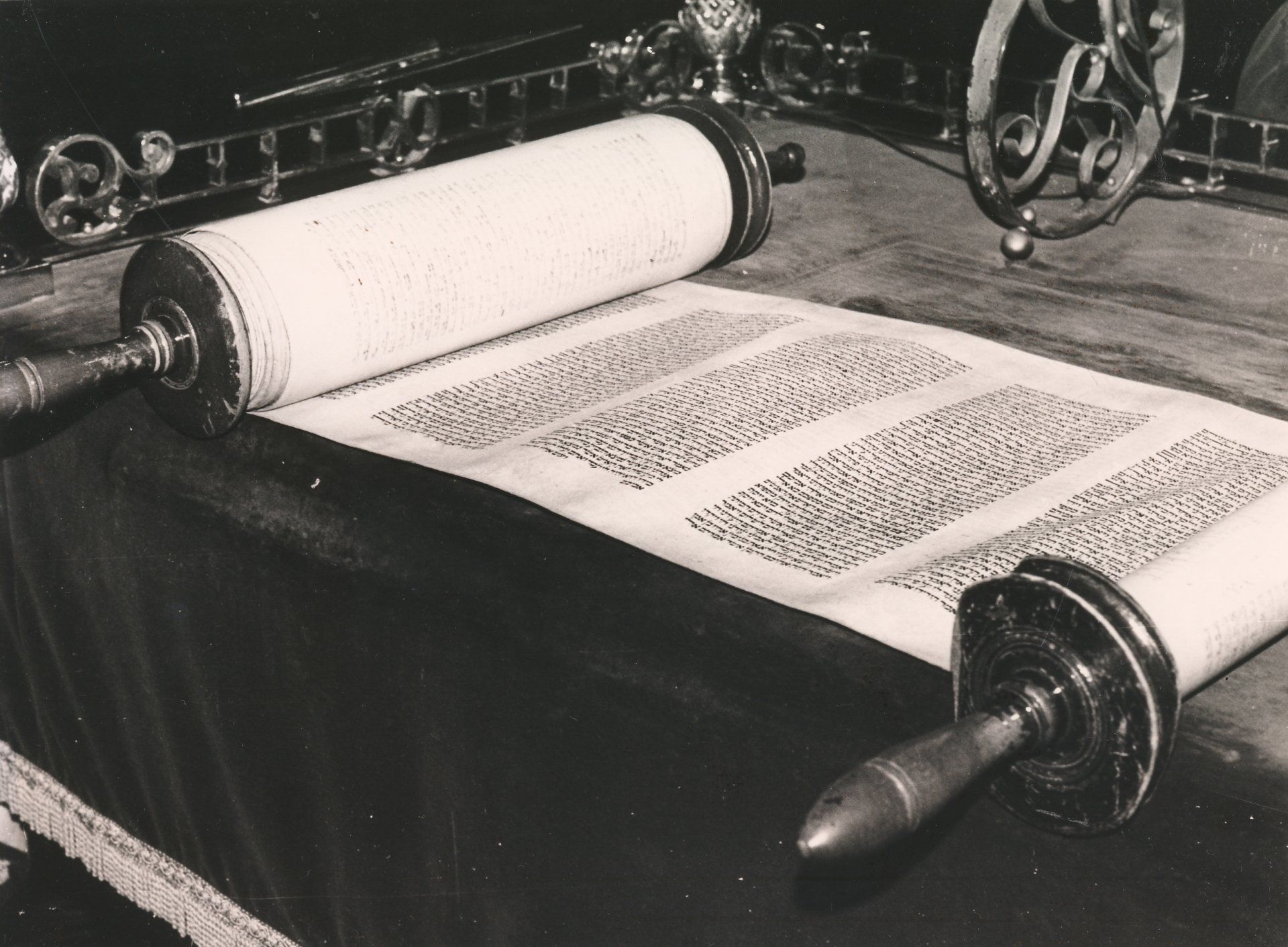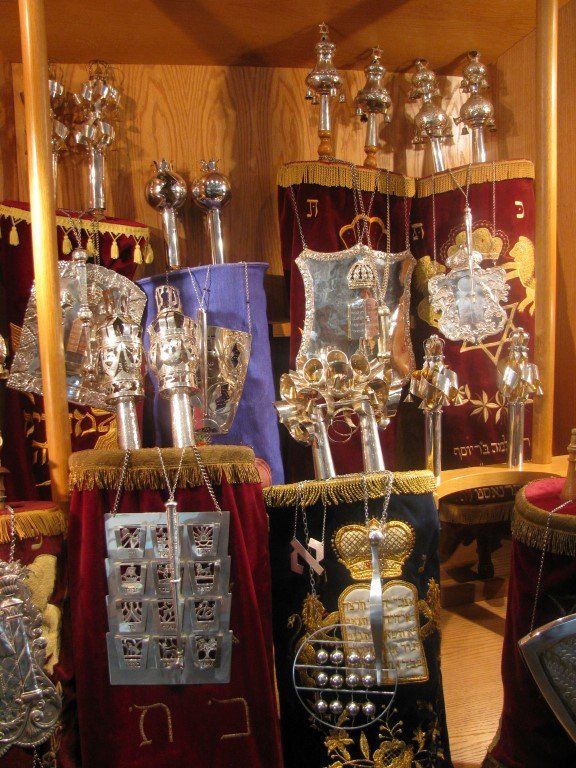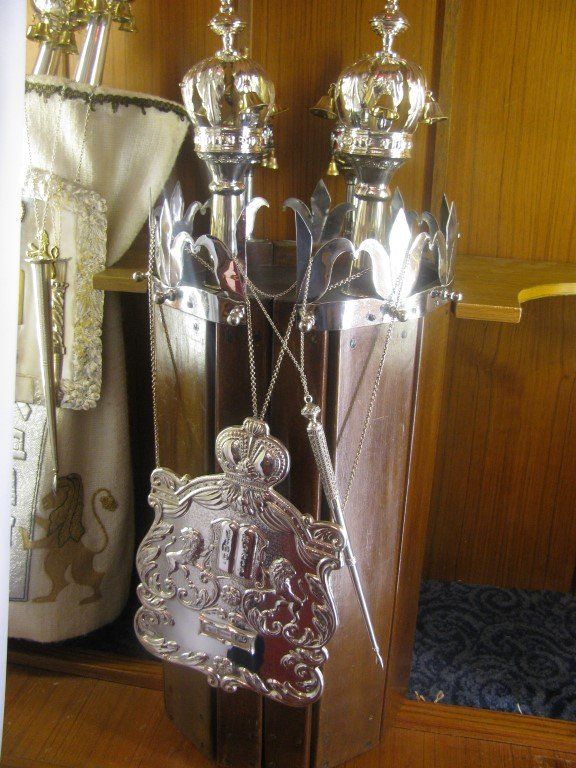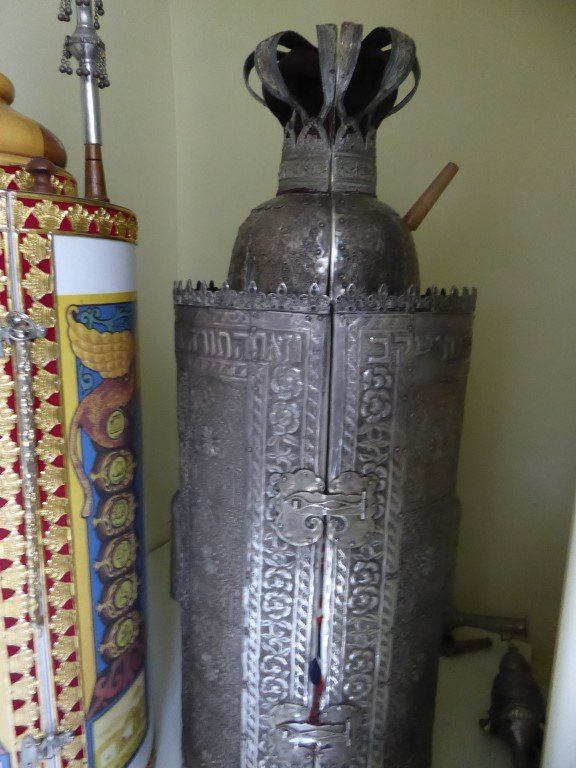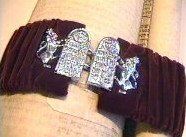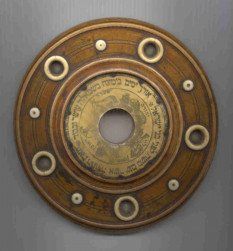Above: This
Sefer Torah
was one belonging to the East London Synagogue and the photograph was taken many years ago whilst I was an art student (hence the black and white!) on the ornate
bimah
(platform) shortly before the synagogue was closed and vandalised. For more on the history of the East London Synagogue you can see my book 'The East London Synagogue - Outpost of Another World', Marc Michaels © 2008 (Paperback, epub
and PDF). Photo © Mordechai Pinchas.
Rimonim (bells)
Adorning the top of the finials are the
rimonim. The
rimonim
correspond to the hems of the special robe which was fringed with golden bells and blue and purple pomegranates (Ex. 28:31-35) however the bells are decorations on what are classed as
kitray torah
(crowns). The crown corresponds to the
mitre
or turban worn by the priests, and over that of the High Priest was a plate of pure gold bearing the word
kadosh
l'Hashem
(Holy to the Lord).
Choshen Mishpat
(breastplate of judgment)
From Ex. 28:15,17, the breastplate of the High Priest was inlaid with twelve precious or semi precious stones one for each of the 12 tribes set out in 4 rows of 3 and sometimes this design can be echoed on the modern
choshen
which most often resembles a shield. A chain holds the breastplate to the scroll by means of the two finials at the top.
K'tonet
(cover)/
Tik
(casing)
The scroll is protected by a cover usually made from a hard wearing velvet and embroidered. The cover or mantle corresponds to the special robe worn over the coat by the High Priest alone that was died blue. Traditionally designs have involved crowns, the
sh'ney luchot ha'brit
(two tablets of the covenant) of the lions of Judah with letters
kaf
and
tav
standing for
Keter Torah
(crown of the
Torah) However many scrolls covers are now seen as works of art in themselves with more contemporary designs and colours other than blue! See the section on
k'tonet
for more examples and some that I've designed.
A
Sefardi
or Yemenite scroll is encased in a tik which is a wooden casing which stands upright.
Sefardim
read it standing up which does give you a bit of a backache when you get down to the bottom of the column.
Teymanim
tends to lay it an angle.
Below: an image slider showing a range of
Torah
covers, casings and decorations from various synagogues I've been to where I've fixed or examined
Sifrey Torah
. Photos © Mordechai Pinchas. 

